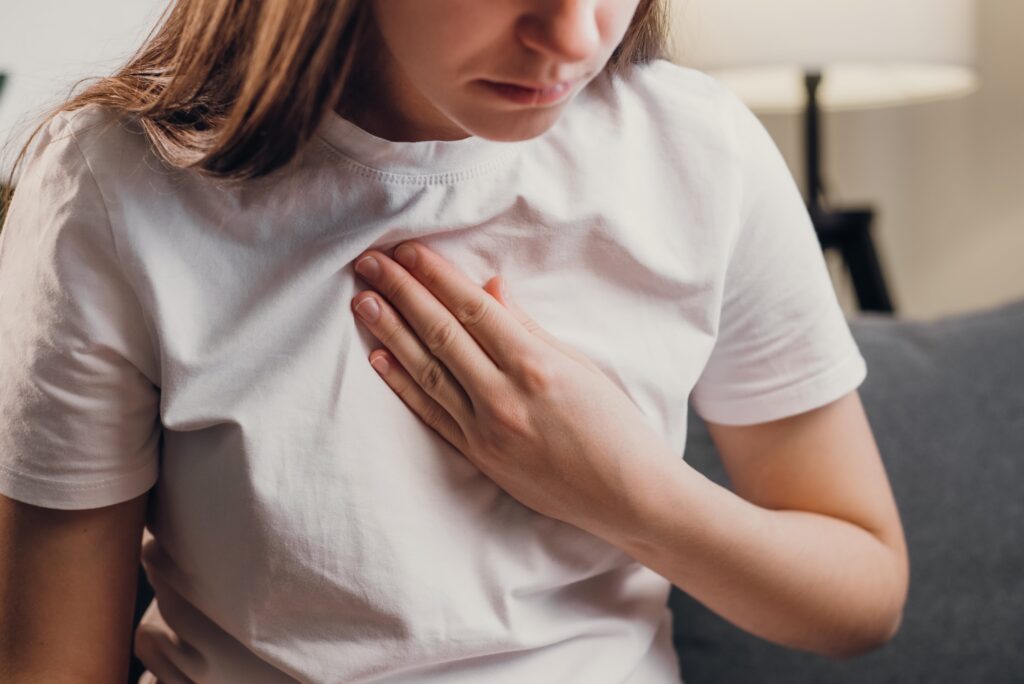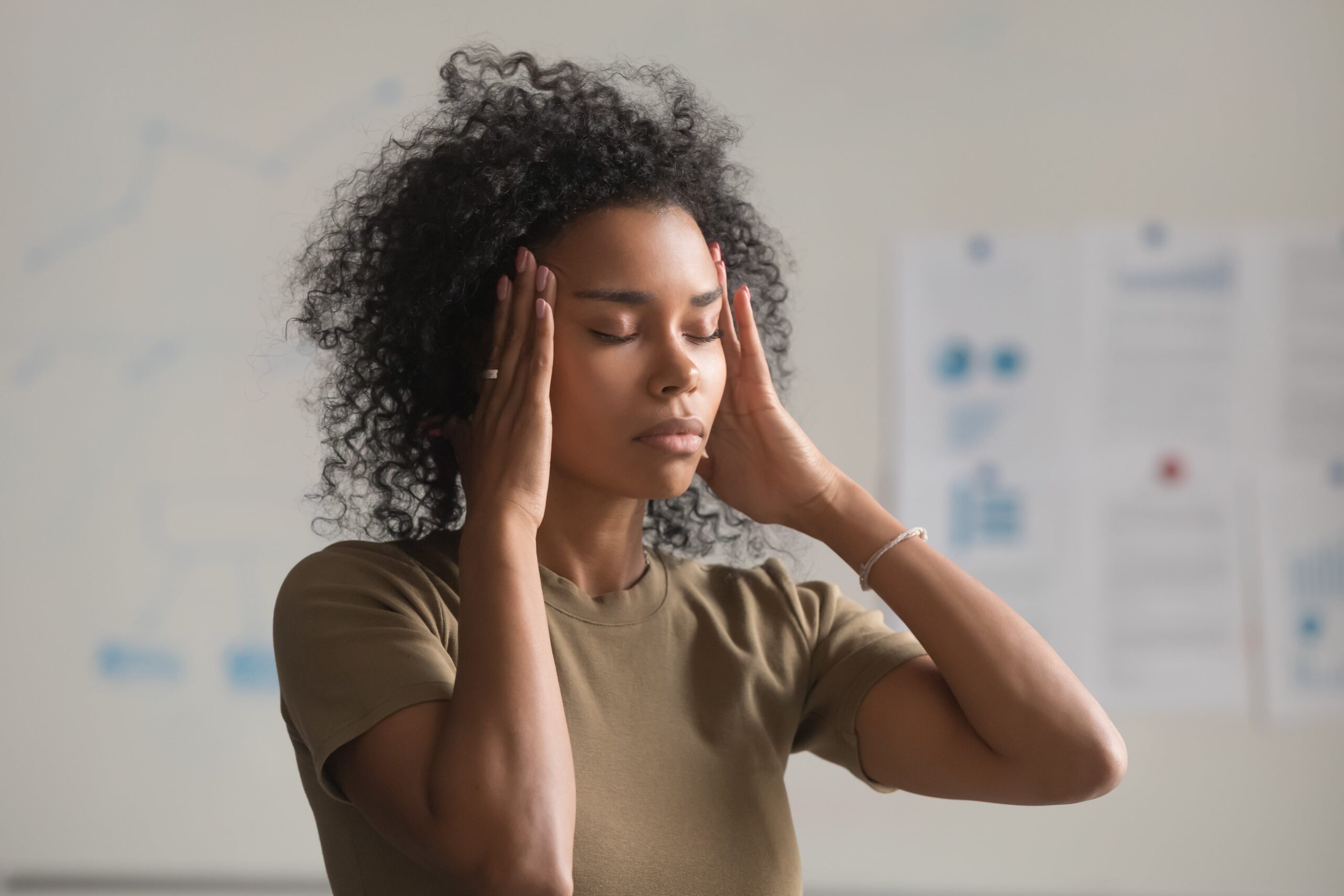
Managing Panic Attacks as a Young Adult: Symptoms, Causes, and Coping Strategies
In young adults, panic disorder and attacks are fairly common. If you have ever experienced a panic attack, the effect can be incredibly scary and debilitating. Understanding why attacks occur is the first step to learning how to prevent them from happening in the future.
Continue reading our blog to learn more about panic attacks as well as helpful coping strategies to use in times of distress.
What is Panic Disorder?
Panic Disorder is a type of anxiety disorder where an individual regularly experiences sudden attacks of panic or fear. These panic attacks are characterized by an unexpected wave of fear, discomfort, or the sense of losing control even though there is no evident present threat or trigger.
Most panic attacks pass within 5 to 20 minutes, but some have been reported to last up to an hour or occur in succession. It’s also common for symptoms to linger for hours following the initial attack, this makes it difficult to tell when panic attacks start and end.
In addition to the attacks themselves, there are some other signs or symptoms related to panic disorder, these include:
- Sudden repeated panic attacks of overwhelming fear and anxiety.
- A feeling of being out of control.
- Fear of death or impending doom during a panic attack.
- Intense worry about when the next panic attack will occur.
- Fear or avoidance of places where panic attacks have occurred in the past.
It’s important to note that not everyone who experiences a panic attack has a panic disorder. However, if someone has more than two panic attacks, they should seek help from a mental health professional because they may be struggling with panic disorder.
Panic Attacks vs. Anxiety Attacks
Despite similarities in symptomology, it is important to note that, panic attacks and anxiety attacks are not the same. One key difference between these two concerns is the duration or length of time they last. Panic attacks often last a few minutes, while anxiety attacks can stem from a chronic form of intense worry or stress and are often interwoven with other mental health concerns such as Generalized Anxiety Disorder (GAD), Depression, or Phobia(s).
In addition, one of the reasons panic attacks can be so debilitating is because they occur suddenly and usually spontaneously, whereas anxiety attacks typically start gradually, preceded by an intense form of worry/dread that exists chronically (such as in GAD), or a specific or perceived stressor that is causing overwhelming feelings of anxiety Below, we’ve provided the different mental and physical symptoms of both panic and anxiety attacks.
Panic Attack Symptoms
When combined, the mental and physical symptoms of panic attacks can become debilitating for some individuals because while they may be brief, they are often more intense.
Mental symptoms:
- Sense of detachment (derealization and depersonalization)
- Derealization – a sense of detachment from the world
- Depersonalization – a sense of detachment from self
- Fear of dying
- Fear of losing control or going crazy
Physical symptoms:
- Chest pain
- Chills
- Excessive sweating
- Difficulty breathing or the feeling of choking
- Feeling dizzy, lightheaded, unsteady, or faint
- Heart palpitations, pounding heart, or accelerated heart rate
- Hot flashes
- Nausea or stomach pain
- Numbness or tingling sensations (paresthesia)
- Trembling or shaking
- Shortness of breath
Anxiety Attack Symptoms
Unlike panic attacks, the symptoms of anxiety attacks may be less intense, but they often last longer. Many people will also find that the symptoms of anxiety attacks are similar to those of generalized anxiety disorder.
Mental symptoms of anxiety attacks:
- Difficulty concentrating
- Irritability
- Restlessness
Physical symptoms of anxiety:
- Disturbed sleep
- Dizziness
- Fatigue
- Increased heart rate
- Increased startle response or fear response
- Muscle tension

Panic Attacks in Young Adults
Young adults experience a wide variety of stressors daily. From balancing school or work to navigating personal and professional relationships, young adults often find themselves overwhelmed.
Studies have shown that panic attacks in young adults are fairly common. About 1 in 10 adults have a panic attack each year, and these attacks usually begin between the ages of 15 and 25.
Causes and Risk Factors
Similar to many other mental health conditions, it is difficult for professionals to pinpoint an exact cause(s) for panic disorder. However, many believe it can stem from a combination of factors, which we will explore in further detail below.
It’s important to note that these potential causes or risk factors also play a large role in what triggers the panic attacks themselves.
Genetics and family history. If a young adult has family members who struggle with anxiety disorders or panic attacks, they may be more at risk for developing a disorder themselves.
Major life events. Any significant event, positive or negative, that causes stress in a young adult’s life has the potential to induce panic disorder or attacks.
Brain structure and function. Many young adults who struggle with panic attacks are known to have sensitive fear responses or an imbalance of neurotransmitters in their brains.
Trauma. When young adults experience a traumatic event, they are more likely to develop panic disorder. This could range from an acute traumatic event such as an assault, accident, or death of a loved one. In addition, young adults who have a history of childhood trauma are also more prone to experiencing panic attacks.
Drugs, alcohol, and other stimulants. The use of drugs and alcohol can increase the likelihood of panic attacks. Similarly, other types of stimulants like caffeine can trigger panic attacks in some young adults.
Other mental health issues. Young adults who have already been diagnosed with a mental health disorder like depression or anxiety can be more at risk for experiencing panic attacks and developing a disorder.
Coping with Panic Attacks
While they may be common and come suddenly, there are still steps individuals can take to prevent and cope with panic attacks. Below, we’ll provide tips for panic attack prevention as well as coping skills young adults can practice every day to manage their stress levels.
1. Breathing Exercises
When experiencing a panic attack, many individuals feel as if they can’t breathe or are unable to catch their breath which is why breathing exercises can be helpful to ease symptoms once the attack starts.
To begin, close your eyes and focus on your breathing while following these steps:
- Breathe in slowly, deeply, and gently through your nose.
- Breathe out slowly, deeply, and gently through your mouth.
- Count steadily from 1 to 5 on each in-breath and each out-breath.
By practicing breathing exercises regularly, individuals can also work to prevent panic attacks from happening. Some individuals find it helpful to incorporate breathing exercises into their daily self-care routines.
2. Staying Active
Studies have shown that being active can help individuals manage stress levels, release tension, improve mood, and boost confidence. Practicing aerobic exercise particularly can benefit an individual’s mental health and well-being.
According to the World Health Organization, a healthy adult should get at least 150-300 minutes of moderate aerobic activity or 75-150 minutes of vigorous aerobic activity each week. The repetitive motions involved in aerobic exercise help individuals focus on their bodies rather than on any stressors that may be on their minds.
Nature-based activities can be especially beneficial to an individual’s mental health and well-being. These could include outdoor fitness classes, yoga, hiking, running, biking, and more.
3. Grounding Techniques
Grounding is a practice individuals can use to help detach themselves from emotional pain and stressors. Simply put, it’s a way for individuals to distract themselves and gain control over their feelings when they are anxious or panicking.
There are three types of grounding:
- Mental (focusing the mind)
- Physical (focusing the senses)
- Soothing (talking to oneself)
Each of these types offers countless grounding techniques with different benefits. Since every individual is unique, it’s important to find what type of grounding exercise works best for them in times of stress.
4. Cognitive Behavioral Therapy (CBT)
One of the best things individuals struggling with panic attacks or panic disorder can do is seek help from a mental health professional. These professionals will be able to introduce young adults to types of therapies that can help them cope with panic, such as cognitive behavioral therapy.
Cognitive behavioral therapy, or CBT, is a common talk therapy that’s used for a variety of mental health conditions. During cognitive behavioral therapy, the therapist will help the individual identify and change the negative thought patterns that trigger their panic attacks.

When experiencing a panic attack, it can be difficult to remind oneself that it will end. This is why learning about panic attack prevention and developing effective coping strategies is the key to finding relief.




